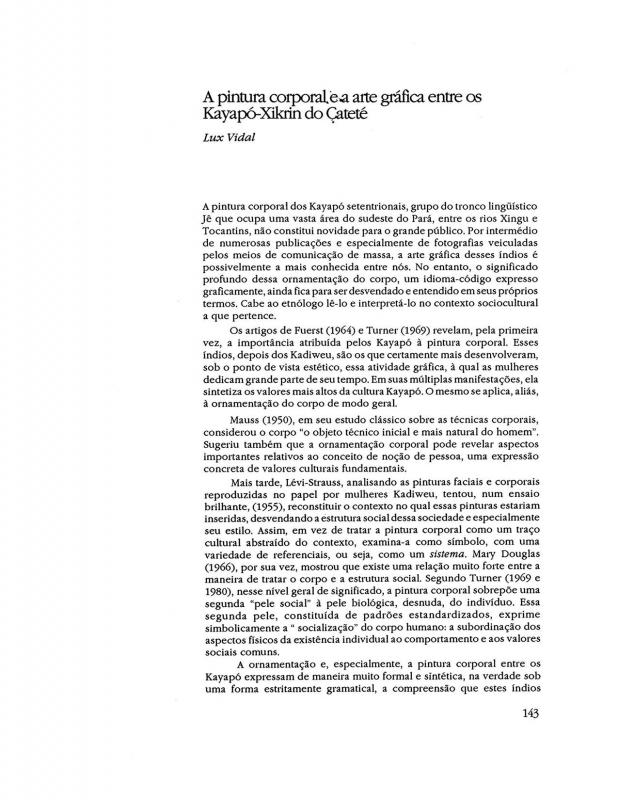This text is an innovative study of the graphic production of the Ticuna Indians, a tribe of over twenty thousand that like countless other indigenous ethnicities, resides in the Amazon region. The author points out the unrivaled mastery of Ticuna drawing. Drawing is an essential part of the daily life of the tribe as well as a way for the tribe to express cultural identity. Lux Vidal observes the decorative procedure used on an array of supports, from braided elements and hammocks to ceramics, panels of tree bark, shields, masks, and even the human body. The masks, which are particularly elaborate, are used for initiation rites, whereas the freer drawings on paper were made upon the author’s request, in some cases. Some nine hundred drawings were collected during eight years of field work. The most common theme of the drawings is animals, followed by scenes of initiation festivities with masked figures and mythical characters.
To complement the broad vision of the aesthetic anthropology of certain Brazilian indigenous groups provided by Lux Vidal, see “A pintura corporal e a arte gráfica entre os Kayapó-Xikrin do Cateté” [doc. no. 1110731], and the catalogue raisonné featuring the essays La notion de personne. La peinture corporelle chez les Kayapó; Les hommes-oiseaux; Toi et toi seul peût porter ma parure.” [Body Painting Among the Kayapó: The Concept of Person and Self; Man-Birds; You and You Alone Can Carry My Jewels.] [doc. no. 1110745].


